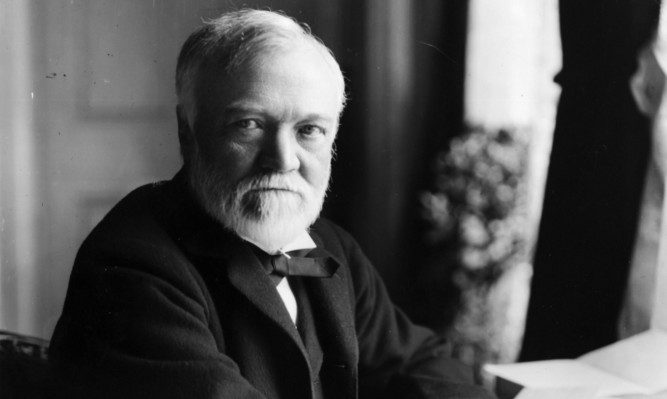The rags to riches story of Fife philanthropist Andrew Carnegie could soon be taught in classrooms across the land.
Following a push by businessman Sir Tom Hunter and MSP Cara Hilton, Carnegie will be added to a resource list of great Scots by Education Scotland.
Better recognition for the achievements of the Dunfermline-born tycoon was championed by Sir Tom during a Carnegie Day breakfast earlier this year.
Listening was MSP Cara Hilton who, inspired by the self-made businessman, took up the case with Scottish Government ministers, asking them to set out what plans they have to ensure every child is taught the Andrew Carnegie story as part of the school curriculum.
Given the influence Carnegie has had on both Scotland and the world, Mrs Hilton believes his story should be explored in the country’s schools.
In response to Mrs Hilton’s question, the Scottish Government has now agreed to add Carnegie to the list of great Scots on Education Scotland’s Studying Scotland website, which provides support to teachers and schools in developing learning for Scottish children.
Minister for Learning, Dr Alasdair Allan, said: “The school curriculum in Scotland is non-statutory and decisions about what topics are covered and how are left to the professional judgment of teachers and not government ministers.
“Education Scotland provides support for teachers and schools to ensure the curriculum remains relevant, engaging and inspiring for all learners.
“Its Studying Scotland website contains a section on great Scots, which includes historical figures, modern day and past entrepreneurs, performers and sports men and women.
“An entry on Andrew Carnegie will appear very shortly on the website.”
Welcoming the decision, Mrs Hilton said: “I am delighted the Andrew Carnegie story will now be promoted in this way.
“It’s vital that children in both Dunfermline and across Scotland are aware of the huge impact Carnegie has had on the world and especially in promoting learning.
“His legacy should educate and inspire generations of children to come.”
She added: “This is indeed a proud moment for Dunfermline as Carnegie’s story is one that has remained very close to the people here.
“His story translates across borders and centuries and this will hopefully be a valuable addition to our children’s education in every school across Scotland.”
Carnegie was born in Dunfermline on November 25 1835 in a cottage which now stands at the corner of Priory Lane and Moodie Street.
He became a powerful businessman and a leading force in the American steel industry and is best remembered as an industrialist, millionaire and philanthropist.
Carnegie believed the wealthy had an obligation to give back to society, so he donated much of his fortune to causes like education and peace.
